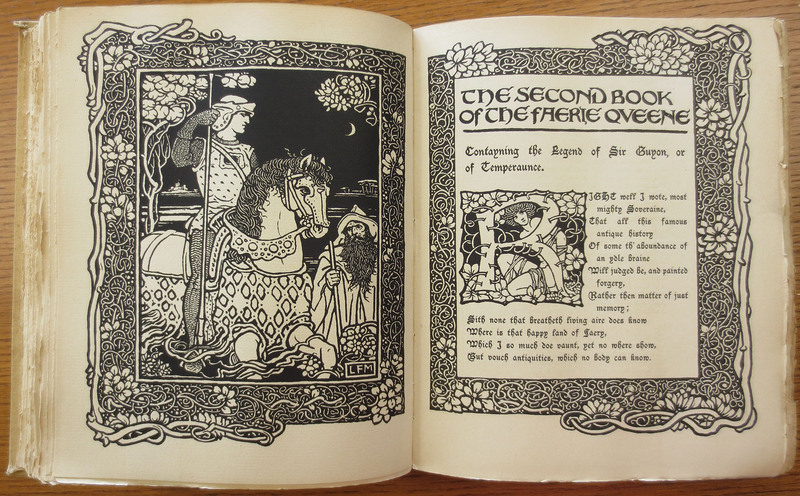Edmund Spenser
Evidence for The Faerie Queene dates back to 1580 in a letter from Edmund Spenser to Gabriel Harvey requesting the return of the manuscript. Published references exist to The Faerie Queene in the late 1580s, although the first edition of the work containing the first three books was not issued until 1590. Three more books were added in 1596 just before Spenser's death.
Spenser held a considerable reputation as a poet prior to the release of The Faerie Queene, yet this work has overshadowed his other writings. The Faerie Queene was immediately successful, thanks in part to its finding favor with Queen Elizabeth. She named Spenser poet laureate, and he assumed a position with Geoffrey Chaucer as a premier poet of England.
Scholar Graham Hough writes on the importance of The Faerie Queene throughout history:
In [Spenser's] own day a large part of the interest in The Faerie Queene was political and dynastic. The celebration of the Tudors, culminating in Queen Elizabeth, as the true continuators of Arthur's line, the allegorical references to the English Reformation in Book I, the transformation of the Duessa into Mary Queen of Scots in Book V, and the many allusions in the same book to events in France, Ireland and the Low Countries -- all these were of the liveliest contemporary interest. Great figures such as Raleigh, Leicaster, Sidney, and Lord Grey appear under a light disguise among Spenser's immense array of characters.
[The seventeenth century] saw Spenser in different colours. The avowed ‘Spenserian' poets, Browne of Tavistock and Giles and Phineas Fletcher, drew chiefly on the pastoral and allegorical romance elements in the poem. Milton's discipleship was of a different order again. He understood Spenser's loftier aims, and hailed him as "our sage and serious Spenser, a better teacher than Scotus or Aquinas". . . . In the later part of the century there was a serious critical vindication of Spenser's achievement [by Thomas Wharton and Bishop Hurd] who both argue that a special place in the literary pantheon should be accorded to the romantic epic of which The Faerie Queene was the prime example.
The Romantic generation itself was even more obviously attuned to Spenser, and directly or indirectly all the great poets of that age were receptive to his influence. Spenser the moralist was in abeyance; it was the music of his verse and the atmosphere of fantastic enchantment that attracted most admiration. In our own day . . . a revival of interest in allegory and great symbolic constructions has again brought The Faerie Queene into the forefront of critical attention, so that a poem which a few years ago seemed to have only a remote and specialised appeal has now shown itself to possess a many-sided power which ensures its place among the great central achievements of English poetry.

